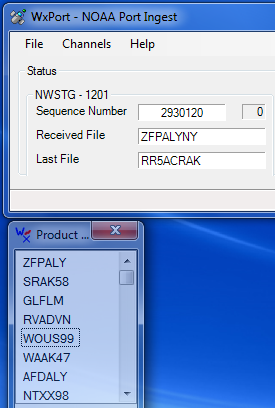I made some modifications to WxPort (our NOAA Port ingest program) to receive the data stream. The stream is in standard SBN format, so I did not have to develop a new ingest routine.
The following picture shows the stream being received and processed by Weather Message.
I plan to update the existing WxWW2000 ingest program to support this feed.



